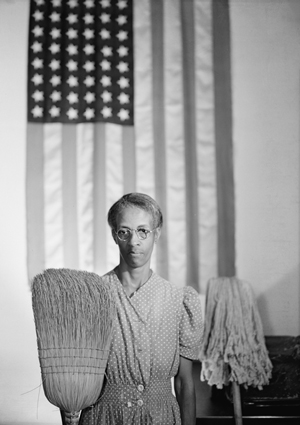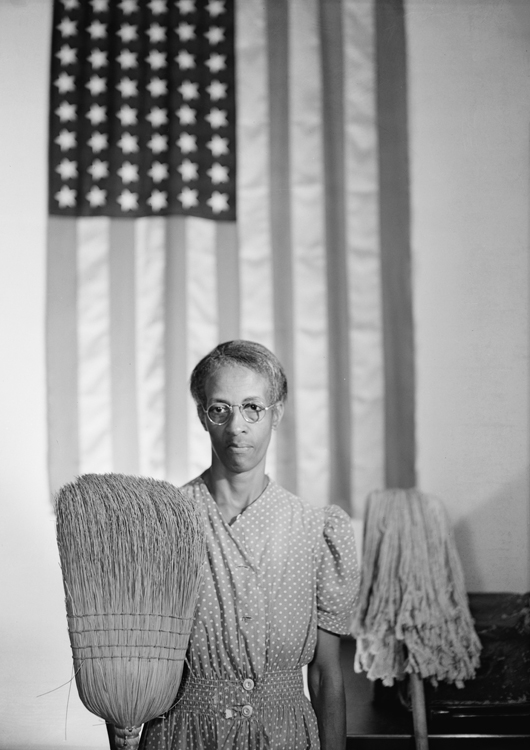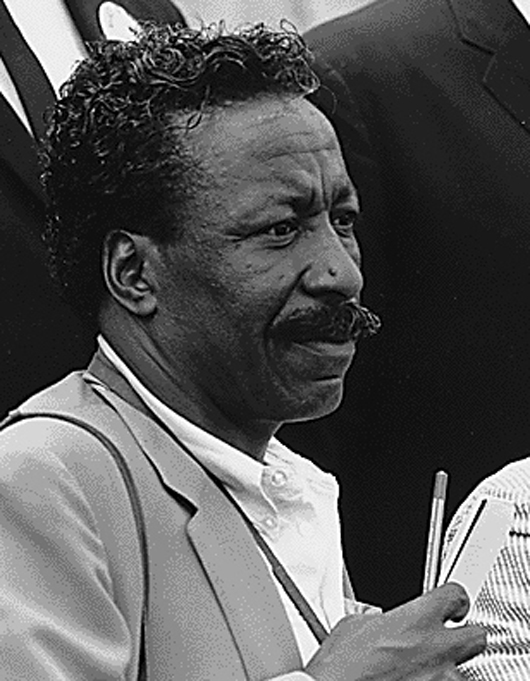
WICHITA, Kan. (AP) – Wichita State University just acquired another 125 classic photographs by Gordon Parks, an American icon.
The move not only makes WSU the destination place for anyone studying Parks, said WSU’s Ted Ayres, but goes further to right a wrong that WSU and Wichita long ago inflicted on the man.
Donors including Wichita philanthropists Paula and Barry Downing gave $250,000 to WSU to buy 125 photographs from the Gordon Parks Foundation. The photos were worth more than that, said Ayres, WSU vice president and chief counsel. But the Parks Foundation gifted the balance to make the acquisition possible. He said the Downings put up $150,000 as a challenge grant. WSU’s student government association put up $70,000, and the WSU foundation raised another $80,000. The additional $50,000 raised will be spent on shipping and care and maintenance of the photos, The Wichita Eagle reports.
The photos now go to the university’s Ulrich Museum of Art, where they will be displayed, probably in an exhibition sometime in 2016, Ayres said.
The university in the mid-1990s had another Parks photo collection and hurt him deeply by rejecting it.
Since making peace with Parks, beginning in 2000, the university has put together an extensive collection of manuscripts, letters, story drafts and a total of about 200 fine arts images done by the Fort Scott native who was considered, long before his 2006 death, one of the world’s most acclaimed photographers.
According to a statement prepared at WSU, the Ulrich collection of Parks photographs now includes several images taken in his hometown of Fort Scott, candid images of Malcolm X, works from his landmark “Flavio” series, which chronicled abject poverty in a slum of Rio de Janeiro, and from Harlem Gang Leader, his first photographic essay for Life magazine in 1948.
The story of how Ayres and WSU have tried so hard to make amends can be understood only if one knows Parks’ longer life story as a native Kansan, Ayres said.
Parks defied formidable odds to become one of the cultural icons in American history: He was born in poverty in 1912 in Fort Scott, and endured vicious racism. But as Wichita native Mark McCormick points out, Parks chose to answer in a way that angry people everywhere should study closely. Fearless, resourceful and brilliant, McCormick said, “He chose to use a camera, a pen, and a typewriter to channel all that pain and anger.”
Parks wrote great poetry. He wrote a book that became a movie, The Learning Tree, still studied in schools. He made Shaft, a huge movie success that made a black man the main character at a time when no director risked that. He was Life magazine’s first African-American photographer, and spent 50 years shooting seminal images of everything from the civil rights 1963 March on Washington to Muhammad Ali’s boxing career.
In one of his more celebrated and defiant images, created at the worst of the arc of the civil rights movement story, he photographed a poverty-stricken black woman janitor working for the federal government. He positioned her with her brooms in front of a hanging American flag and let the look of despair, exhaustion and courage on her face convey the message. Many black people at the time were not only underpaid but segregated, denied equal education, denied the right to vote and sometimes lynched, beaten or shot if they protested.
McCormick has spent years helping acquire Parks’ works for Wichita, first as a Wichita Eagle columnist and now as director of the Kansas African American Museum in Wichita, which has a separate collection of 29 Parks photographs, and where two of Parks’ children serve on the board.
“This man was deeply hurt by how this state treated him, and how he was treated here in Wichita,” McCormick said. “But they tried to make it right long ago, and this latest acquisition speaks to how that bad treatment couldn’t scrub out the love Mr. Parks still had for this state.”
Both McCormick and Ayres got to know Parks before his death.
Many years ago, Ayres said, Parks gave about 150 of his famous photos to WSU. The director at WSU’s museum at the time eventually shocked Parks by sending the photos back to him.
“The museum director at the time thought that we were not able to keep and protect them in good condition, and also, it was not clear in that person’s mind about whether the collection was a loan or gift,” Ayres said. “Gordon thought he had made it clear that it was a gift.”
“He was deeply offended,” McCormick said. Later, McCormick said, the Wichita City Council had a chance to acquire a substantial collection of Parks’ works and put it in a city library and rejected the idea.
WSU’s role in this was a mistake that the university began apologizing for in 2000, with Ayres taking the lead. In that year, Ayres said, WSU acquired four of Parks’ photographs, and invited Parks, then in his 80s. They gave him a dinner, made a public event of his appearance. And Ayres, apologizing to Parks publicly, and trying to make things right, ended up fumbling.
With Parks sitting only a few feet away, Ayres talked glowingly about Kansas Land, a poem Parks had published in 1968.
“It’s only about eight stanzas long, and I’d read only the top half,” Ayres said.
The butterflies to chase through grass high as the chin. The silver of September rain, the orange-red-brown Octobers and Novembers, the white Decembers and the hungry smells of hams and pork butts curing in the smokehouses.
Ayres had failed to read the stinger at the end.
Yes, all this I would miss along with the fear, hatred and violence we blacks had suffered upon this beautiful land.
“He could have made quite a scene,” Ayres said. And he did get up and tell the ending. But Parks chose to see that Ayres and everyone else was well-intentioned. “He couldn’t have been more gracious, considering,” Ayres said.
That gathering led Ayres to an ongoing relationship with Parks, Parks’ friends and the Parks foundation. And that helped lead WSU to the latest acquisition.
“And now anybody studying Mr. Gordon Parks has to come to Wichita State University to do that,” McCormick said.
“How cool is that?”
___
Information from: The Wichita (Kan.) Eagle, http://www.kansas.com
Copyright 2014 Associated Press. All rights reserved. This material may not be published, broadcast, rewritten, or redistributed.
AP-WF-02-10-14 2135GMT
ADDITIONAL IMAGES OF NOTE




